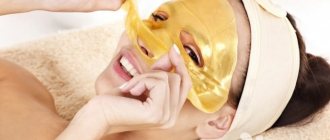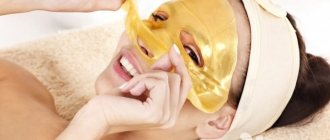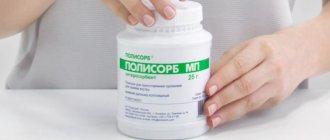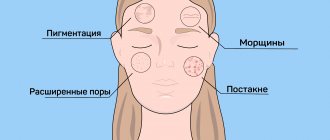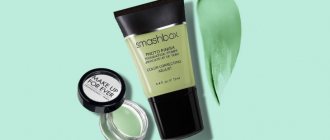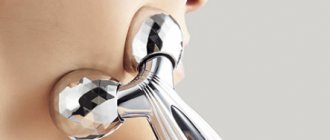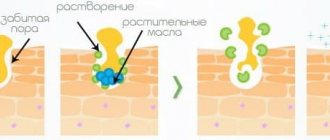If you're a fan of self-care, you've probably wondered more than once: when is the best time to use a face mask for it to really work? Before or after a shower? And how often should this be done? There is a lot of conflicting information on the Internet, and not every “home expert” can be trusted.
The answer lies in your skin type and which product you choose to suit your needs. Scroll below and you will finally learn how to properly use a face mask so that your skin becomes clean, smooth and “Shine Bright Like e Diamond”!
In this article:
How to properly apply a face mask When is it better to apply a face mask: before or after a shower
Why shouldn't you use face masks too often?
Using face masks too often can have the opposite effect. They have a more intense effect on the skin than creams and other skin care products. The reason for this is that the masks contain a higher concentration of biologically active components.
Oversaturation of the skin with active substances often leads to:
- thinning of the epidermis, disruption of its protective properties, inflammatory reactions;
- loss of moisture and pH imbalance;
- failure in the metabolic processes of the lipid layer and the appearance of excessive dryness.
An excess of components also stops the synthesis of many substances that are formed in the skin layers. The layers do not receive enough oxygen through the pores and stop breathing.
Mistake 2: “I’ll leave it overnight.”
The most “resourceful” representatives of the fair sex do not just keep the mask on for longer, but leave it on all night. At the same time, the main idea is this: at night, the skin rests, the pores open, and the mask works better. But this is categorically wrong. The consequences for the skin after a night spent with a mask can be very dire.
The exception is special night masks. But the main thing here is to monitor the composition and avoid fruit acids (for example, lemon juice), as well as perishable foods if this is a homemade recipe.
Types of masks and frequency of use
According to their consistency, the preparations are:
- Gel. Usually contain hyaluronic acid, glycerin, aloe juice, which moisturize and tone the skin.
- Cream. They contain a number of moisturizers, antioxidants, and nutritional ingredients. Night cream masks have a more concentrated formula than day masks.
- Film. They form a thin shell that absorbs dirt and excess fat on the face. Cleanses the epidermis of dead cells and smoothes wrinkles.
- Fabric. Made on a gel basis and impregnated with a hydrofix and various useful substances. The components retain moisture in the skin, nourish and rejuvenate it.
- Alginate. The masks are based on salts of alginic acid contained in red, brown and green algae. They have a pronounced drainage and lifting effect.
- With exfoliants. The preparations contain abrasives that gently polish the upper epidermal layer and smooth the skin. Clay, cream or gel is used as a base.
Face masks are classified according to their composition into:
- acidic;
- herbal;
- fruit and berry;
- oil;
- clay;
- algae;
- vitamin.
According to the method of action, face masks are divided into types, which are also presented in the PREMIUM cosmetic line:
- Cleansing. Suitable for oily and combination skin as it eliminates excess sebum. They tighten pores well and mattify the skin. MATCHA anTEAstress cleansing mask with white clay, betaine and niacinamide deeply cleanses sensitive skin, eliminates excess sebum, and stimulates metabolic processes.
- Moisturizing. They are considered universal, since any skin requires hydration, regardless of age, season or care program. Cream-polyhydrant with sea grapes, natural oils and hops provides a pronounced moisturizing effect, corrects aging, improves skin tone and turgor.
- Anti-inflammatory. Suitable for problematic skin prone to rashes, irritation, acne. They have an antiseptic effect and give the face a healthier appearance. “Resorbable” cream mask with white and green clay prevents stagnation in the epidermis and eliminates sebaceous plugs. The product tightens pores well, improves microcirculation and complexion.
- Calming. Suitable for sensitive facial skin that reacts sensitively to external irritants. Help eliminate redness, irritation, and other unwanted reactions. Soothing cream mask with azulene and corn oil removes greasiness, flaking, redness and infiltration, reduces pimples and blackheads.
- Nutritious. With their help you can fight the first signs of aging. This is especially true for dry and aging skin. Nourishing masks effectively eliminate tightness and restore the epidermal barrier. The skin becomes silky and elastic. Hyaluronic cream mask with AHA complex improves the elastic and protective properties of the skin and reduces wrinkles.
- Whitening. Get rid of freckles, age spots, dark circles under the eyes, refresh your appearance. The “Brightening” cream mask with a complex of whitening ingredients gives a pronounced depigmenting effect and evens out the complexion.
- Anti-aging. Effectively fight wrinkles and other signs of aging. Increases the elasticity of the epidermis and tightens the facial contour. The “Complex” cream mask has a positive effect on the metabolic processes of the skin, increases its elasticity and hydration properties.
- Anti-aging. Deeply moisturize the skin, activate the production of collagen and elastin, tighten and even out the facial contour. Lifting cream mask with snail secretion, fruit acids and a vitamin complex is intended for intensive care of dry skin of the face and neck with signs of aging. It has a pronounced rejuvenating effect, smoothes out small and medium wrinkles and prevents the formation of new ones.
With the help of these cosmetics you can slow down the process of skin aging.
Which nozzle to choose for using an irrigator
There are several different attachments for the irrigator, the choice of each of which depends on the required purposes:
- Standard. Designed for treating teeth and gums without signs of disease.
- Orthodontic. It will be the best option for people using any type of prosthetic systems. This attachment allows you to remove plaque and dirt under bracket systems and bridge retainers with the highest quality possible.
- Periodontal attachment. It is considered a highly targeted accessory. It is used only at minimum power levels and is necessary for cleaning interdental spaces.
- Implantation attachment. As the name suggests, it is used in cases when it comes to the need for hygiene of teeth with implants and crowns. A distinctive feature is the presence of 3 tufts of bristles on the tip.
- Tongue treatment attachment.
- Brush type nozzle. It should be noted that such an attachment cannot act as an absolute substitute for a toothbrush.
We should also highlight the additional function of the irrigator. The essence of this direction is preventive measures in the treatment of sinusitis and rhinitis. In this case, a specialized nozzle and an individually selected mode are used.
How many times a week can you make a mask?
To find out how often you can do face masks, you should understand your skin type, and also select them according to your age.
Depending on age
Usually there are three age gradations:
- Up to 25 years old. It is recommended to make masks 1-2 times a week. Young skin copes well with the negative effects of external factors and recovers quickly.
- From 30 to 40 years. The skin begins to lose tone and elasticity, peeling and dryness often appear. Take these nuances into account and use masks at least 3 times a week.
- After 40 years. Mature skin loses the rate of cellular regeneration, so it is recommended to make moisturizing masks every day, anti-aging masks every other day, and nourishing masks every 2-3 days. You can use one mask composition for several months and then change it to a new one.
Some masks have several properties at once. Consider them for your skin type.
Depending on skin type:
- For oily skin, it is important to saturate with moisture and nutrients about 3 times a month. Rejuvenating masks are recommended to be applied 2 times a week, cleansing masks - 2 times every 10 days.
- Dry skin is prone to flaking, so it needs moisturizers. They can be used once a week. For cleansing, it is best to make film masks.
- Normal skin usually does not cause serious problems, so all types of masks can be used several times a week.
- Combination skin requires special attention to each area. Control of sebum production is important here, so products with a mattifying effect will be the most effective. They can be done 3 times a month. Moisturizing and nourishing masks are recommended to be applied once a week.
- For problematic skin prone to acne and acne, anti-inflammatory masks are relevant, which can be done regularly until its condition normalizes.
conclusions
- It’s not for nothing that fabric masks are in demand all over the world: they are convenient and give a quick effect. With constant use, they significantly improve the skin, and can also become a salvation when you urgently need to get yourself in order before an important event.
- The composition includes hyaluronic acid and collagen, extracts of herbs, berries, fruits and vegetables, mucin, honey and propolis, vitamins, minerals and trace elements. Each product is designed to solve a specific skin problem, each time you choose the purpose you need.
- You should approach masks with caution due to possible allergies. They often contain plant and animal components that can cause allergies. If burning and redness appear during the process, you should take another mask. For such skin, it is better to choose pharmaceutical masks.
What are the benefits of face masks?
Face masks perform many useful functions:
- cleanses and exfoliates the epidermis of cosmetics, various contaminants, and dead cells;
- dry and mattify the skin, eliminate oily sheen;
- moisturize and nourish it with useful substances;
- stimulate cellular metabolism;
- relieve acne and other irritations;
- lighten freckles, age spots;
- eliminate wrinkles and stimulate regeneration processes in cells;
- tighten and rejuvenate the skin.
Regular use of face masks allows you to preserve its beauty and youth for a long time.
The most popular balms for irrigator
“Terasol” (antimicrobial effect), “Denfil” (alcohol-free balm, acceptable for use in children), “Asepta” (caries prevention), “Irix” (non-foaming balm with menthol to freshen breath).
The use of tap water is extremely undesirable due to the risk of device failure, since this water contains sedimentary components.
If it is impossible to use balsamic liquids, you can use boiled or special purified water.
How to alternate face masks?
If the skin is not problematic, the application regimen may be as follows:
- first there is a deep cleansing of the face with clay, film or peeling masks;
- the next day you can make moisturizing, nourishing, tightening masks (including alginate ones).
Alternate nourishing masks with moisturizing or cleansing ones, as they are denser in composition. They can clog pores. Combination skin needs moisturizing, nourishing and whitening masks. They can be done alternately once a week.
Face masks are easy to use. They save care time, slow down aging, solve skin problems and improve appearance.
Skin preparation
To get maximum effect, you need to follow several rules. The first of these is skin preparation. This stage determines how deeply and in what volume the active ingredients of the serum are absorbed.
Before applying the mask, you need to thoroughly cleanse your skin:
- Rinse off cosmetics with micellar water.
- Cleanse the pores with foam or cleansing gel.
- It is advisable to use a scrub or peeling to remove the rough and dead top layer.
- Wipe your face with tonic or hydrosol.
- Dry with a towel.
Which dental irrigator to choose
Basically, irrigators are divided into 2 types: stationary and mobile. Stationary irrigators have a large capacity for liquid (about 1000 ml), operate from the mains and their main distinguishing feature is high power. Mobile (portable) irrigators are light in weight, the volume of liquid is almost 2 times less than that of stationary ones (400-500 ml) and operate on batteries.
If you plan to mainly use the irrigator at home, then it is certainly better to buy a stationary irrigator, since you do not need to buy batteries for it, and the large volume of the liquid reservoir is enough for several uses, or for use by two people.
If you travel often, it is better to take a portable irrigator model, since it takes up little space and does not require an outlet to operate.
